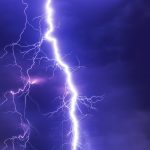Sickening radiance is one of the more complex spells in Dungeons & Dragons 5e, so lots of players tend to overlook it. It’s easy to see why it can appear underwhelming at first glance, but we’re going to dive into its complexities and show you why you should consider taking sickening radiance the next time your character is thinking about 4th-level spells.
Table of Contents
How The Spell Works
The spell’s text from Xanathar’s Guide to Everything reads: Dim, greenish light spreads within a 30-foot-radius sphere centered on a point you choose within range. The light spreads around corners, and it lasts until the spell ends.
When a creature moves into the spell’s area for the first time on a turn or starts its turn there, that creature must succeed on a Constitution saving throw or take 4d10 radiant damage, suffer one level of exhaustion, and emit a dim, greenish light in a 5-foot radius. This light makes it impossible for the creature to benefit from being invisible. The light and any levels of exhaustion caused by this spell go away when the spell ends.
At higher levels, the spell performs the same. You don’t see an increase in damage or duration.
Who Gets Sickening Radiance
Sickening radiance is available on the Wizard, Sorcerer, and Warlock spell lists. Bards also have access to this spell through their Magical Secrets feature.
What Are The Uses
Sickening radiance is a combat spell, pure and simple. It provides a combination of radiant damage and debuffs your foes by inflicting levels of exhaustion. The casting time is one action, and it requires concentration because the spell lasts for up to 10 minutes. It only needs verbal and somatic components.
One of the only downsides to this evocation spell is that it requires a Constitution saving throw from your enemies; something they’re usually quite good at. However, most players utilize natural or magical barriers to trap opponents in the area of effect, and it only takes a single bad roll to start suffering from sickening radiance.
You’re probably thinking: so what? It only does 4d10 damage (an average of 20) each time. True, but if all you want is pure damage, this isn’t the spell for you. Casters who rely on sickening radiance are looking for more. One thing the spell neatly handles is the possibility of invisible enemies. As long as your target fails its saving throw, it can’t turn invisible.
The crux of this spell lies in the levels of exhaustion. Exhaustion is one of the many status conditions that are possible in D&D, but it is insidious because you can suffer from up to 6 levels of exhaustion. That’s unique when compared to other status conditions that either apply or don’t, with no middle ground. However, each compounding level of exhaustion makes it much harder to cope or rid yourself of the condition.
One level of exhaustion gives a target disadvantage on ability checks. Two levels halve their speed. Remember that each successive level continues the effect(s) from previous levels incurred and adds additional effects. Three levels of exhaustion give disadvantage on attack rolls and saving throws. That’s key because now it becomes that much harder for the target to succeed on their Constitution saving throws against this spell in the future.
Once you hit six levels of exhaustion, a target dies. Most of the time, you’ll have allies who can fire ranged attacks (spells or weapon attacks) into the area to hopefully kill the target before you have to sit through a minimum of six rounds of combat. However, some players use sickening radiance in conjunction with spells like wall of stone or forcecage to simply trap an enemy in that area and wait it out.
The only time this spell isn’t so good is if you can’t contain your opponents or your party primarily relies on melee combat. Obviously, you don’t want your allies to deal with levels of exhaustion!
Comparable Spells
Sickening radiance is the only spell to date that incorporates so many ideas (damage, exhaustion, and anti-invisibility) in a single area-of-effect spell, but there are other area-of-effect spells that do damage to multiple foes simultaneously. The most famous spell is fireball because it does a lot of damage and has a very large radius.
If you’re honing in on the anti-invisibility measures, spells like true sight, see invisibility, and faerie fire are just a few examples of ways you can either buff yourself and your allies or debuff your opponents to stop them from becoming unseen on the battlefield.
In Summary
Sickening radiance is a seldom-used spell that most players don’t read carefully enough to understand its use cases. The best time to drop this spell is if you have some way of containing your opponents in one area and preventing them from leaving. Depending on your campaign setting and party makeup, that may be easier said than done, but if you can do it, this spell is surprisingly powerful.


